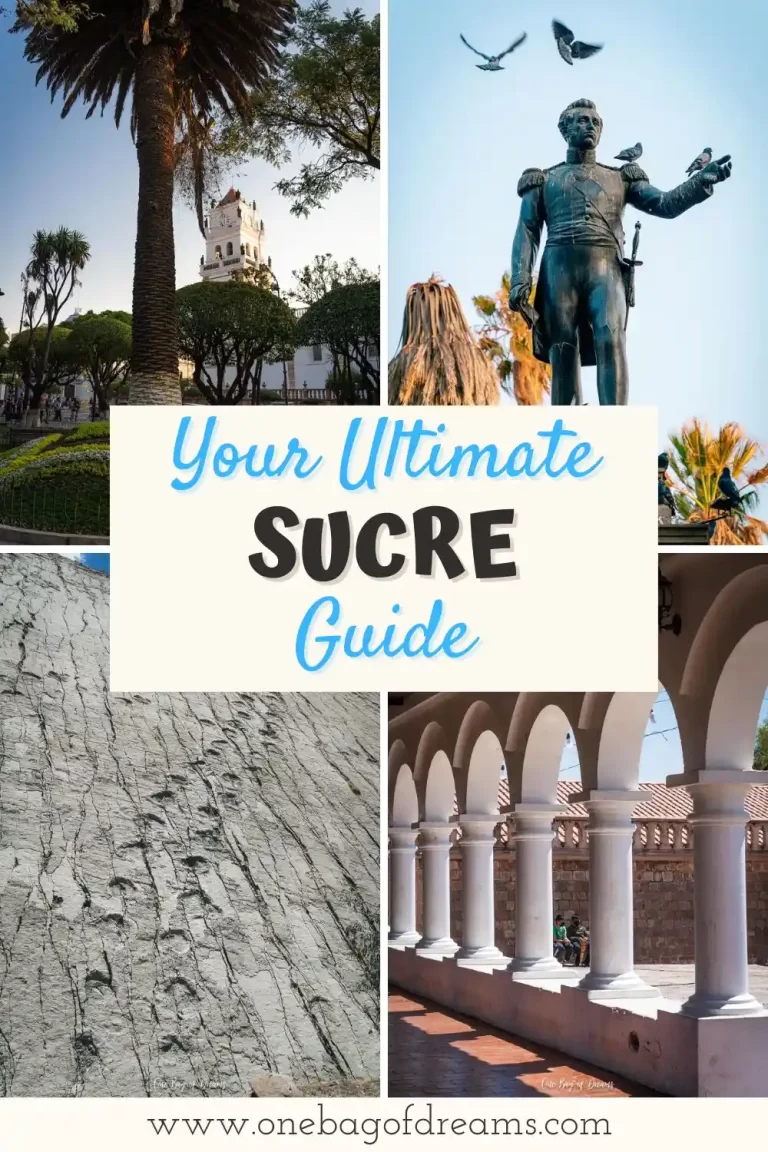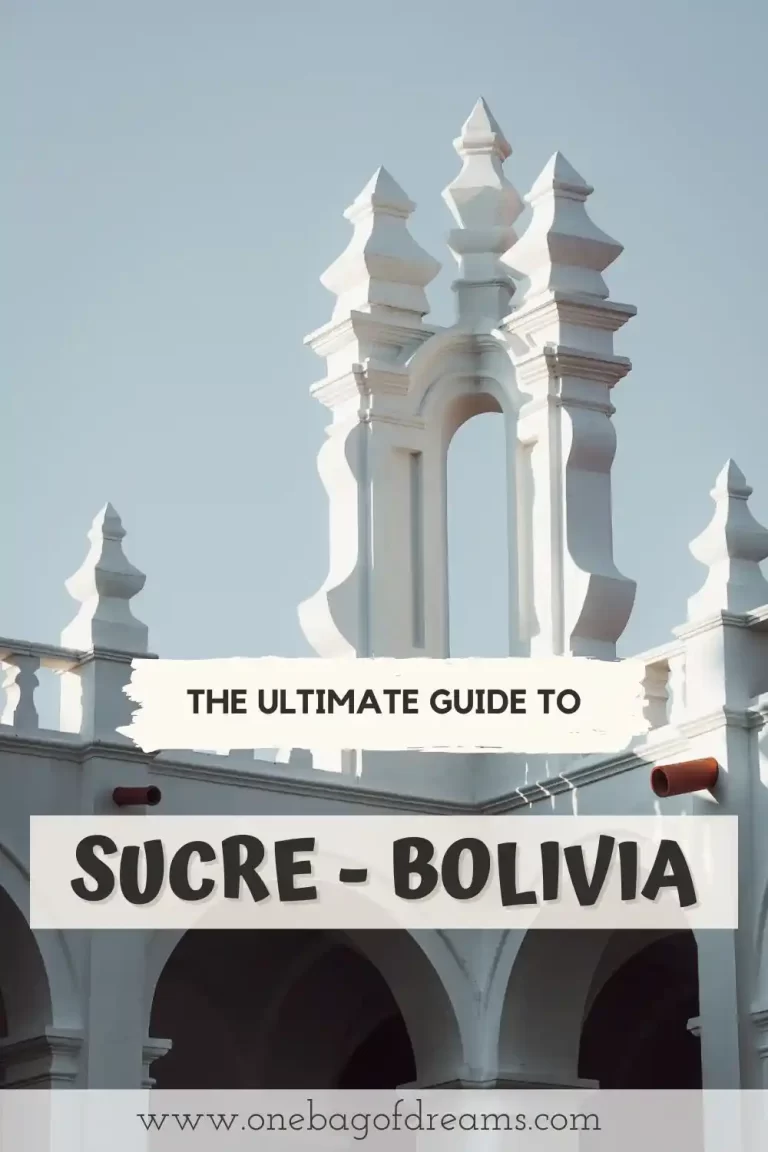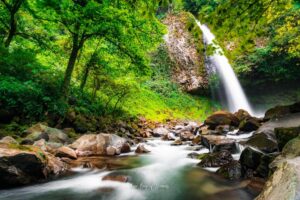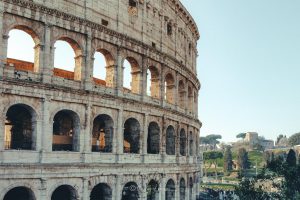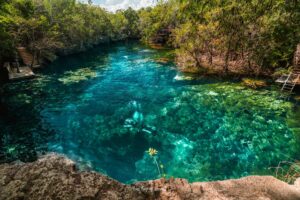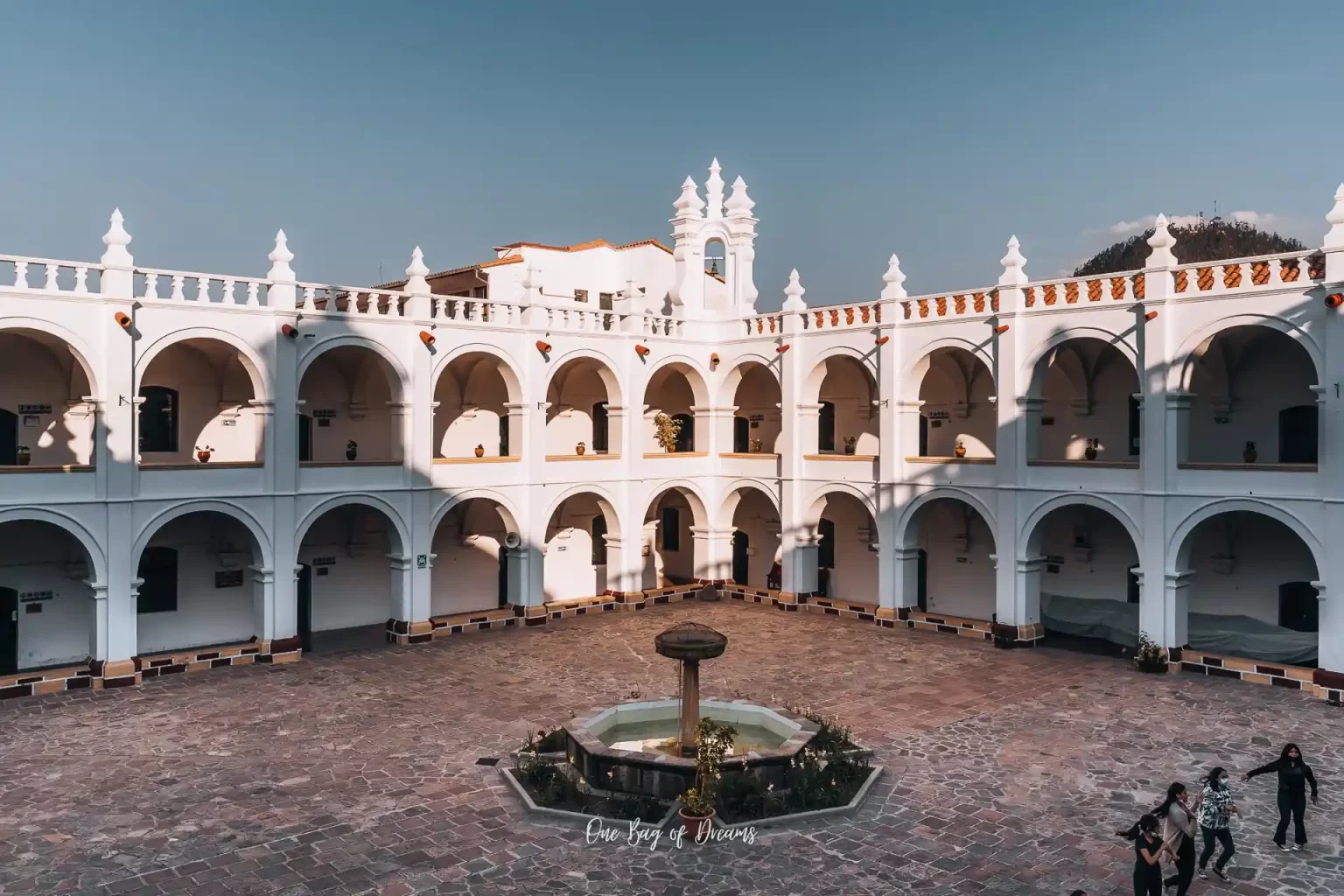
Sucre, Bolivia: The Ultimate Travel Guide to Exploring the City's Hidden Gems and Local Favorites
Welcome to Sucre in Bolivia. Sucre is a city that will capture your heart with its vibrant culture, colonial architecture, and breathtaking landscapes. As the constitutional capital of Bolivia, Sucre is a city steeped in history and tradition. Its white buildings, vibrant markets, and ornate churches will transport you back in time. From exploring the city’s many museums and landmarks to immersing yourself in the local makets, there is no shortage of things to do in Sucre. Whether you’re a history enthusiast, a foodie, or an adventure seeker, Sucre has something for everyone. So pack your bags, grab your camera, and get ready to fall in love with Sucre, Bolivia.
Contents
About Sucre
Sucre, also known as La Ciudad Blanca or the White City, is the constitutional capital of Bolivia and one of the country’s most charming cities. Founded in 1538, Sucre has a rich history, having played a key role in Bolivia’s fight for independence from Spain. Today, Sucre has around 300,000 citizens, and its colonial architecture, colorful buildings, and cobblestone streets make it one of the most picturesque cities in South America.
Located in the central part of Bolivia, Sucre is nestled in a valley surrounded by the Andes Mountains and is known for its pleasant climate, which ranges from 15 to 21 degrees Celsius year-round. With a vibrant arts and culture scene, plenty of outdoor activities to enjoy, and a delicious local cuisine featuring specialties such as Salteñas, Sucre is a city that will leave you enchanted and wanting more.
Whether you’re interested in visiting Sucre’s many museums, exploring the local markets, hiking in the surrounding mountains, or taking spanish lessons, this city has something to offer for everyone.
Top Things to Do in Sucre
Sucre is a city full of wonder and excitement, and there is no shortage of things to see and do here. From exploring the city’s fascinating museums and landmarks to participating in the vibrant arts and culture scene, Sucre has something to offer every type of traveller. Whether you’re looking for adventure or relaxation, Sucre has it all. In this guide, I will take you through the top things to do in Sucre so that you can make the most of your time in this charming city.
Chill out at Plaza 25 de Mayo
The main square Plaza 25 de Mayo is the heart of Sucre, located in the city’s historic centre. This beautiful plaza is surrounded by some of Sucre’s most important buildings, including the Cathedral, the government buildings, and the Casa de la Libertad.
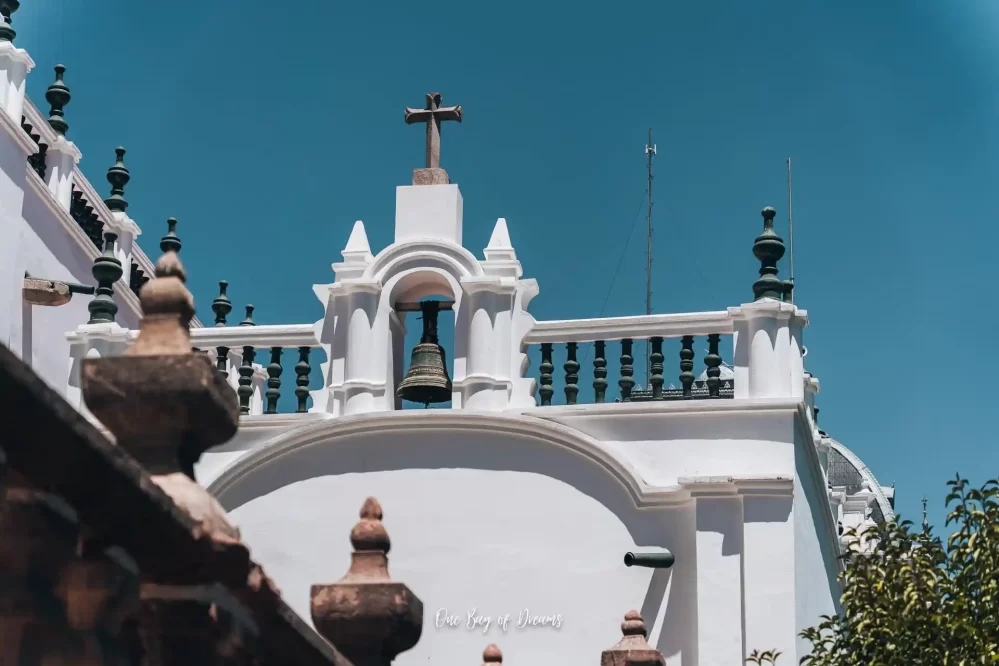
The plaza itself is a popular meeting place for locals and tourists alike, with benches and a multitude of fountains surrounded by lush gardens. Every Sunday the roads around the square will be closed to traffic and therefore becomes the perfect place to chill out and watch the world go by. At night, the plaza is beautifully illuminated, creating a magical atmosphere that is not to be missed.
Visitors to Sucre should definitely plan to spend some time in Plaza 25 de Mayo, whether it’s to relax and people-watch, eat delicious ice cream, admire the beautiful architecture, or attend one of the many cultural events that take place here throughout the year.
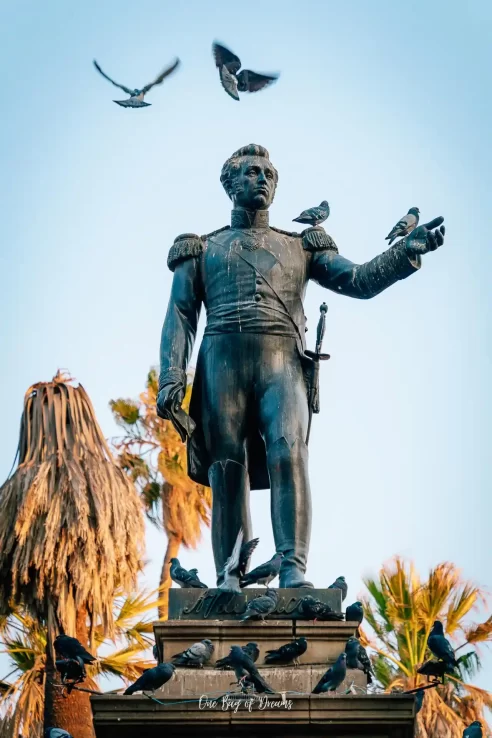
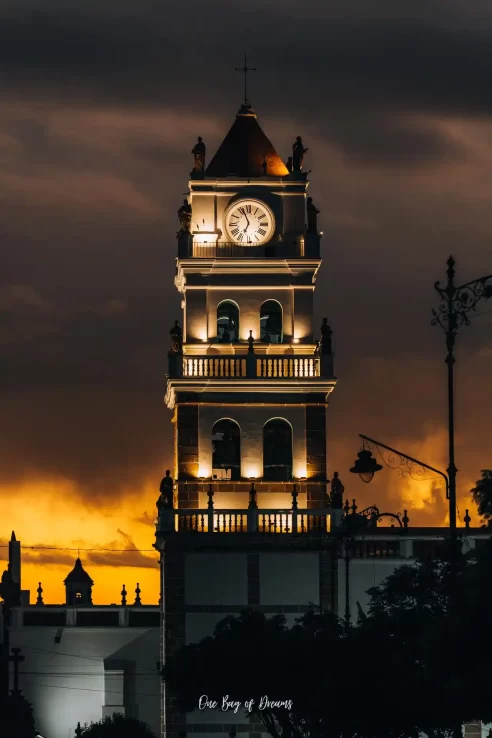

Top Tip: Every Sunday the area around Plaza 25 de Mayo becomes a carfree zone. This is the perfect opportunity to explore and relax in this beautiful square.
Visit the Central Market
No visit to Sucre would be complete without a walk around the central market. Located just a few blocks from Plaza 25 de Mayo, this bustling market is a must-visit for anyone interested in experiencing the sights, sounds, and smells of Sucre.
Here you’ll find an incredible array of fresh fruits and vegetables, meats, cheeses, and other local products, as well as colourful handicrafts and souvenirs.
The market is a great place to practice your Spanish and haggle with vendors for the best prices. And, of course, no trip to the market would be complete without trying some of the delicious food on offer, such as salteñas, sopa de mani, papas rellenas, or mondongo. Visiting the central market is a great way to immerse yourself in Sucre’s vibrant culture and get a taste of everyday life in the city.
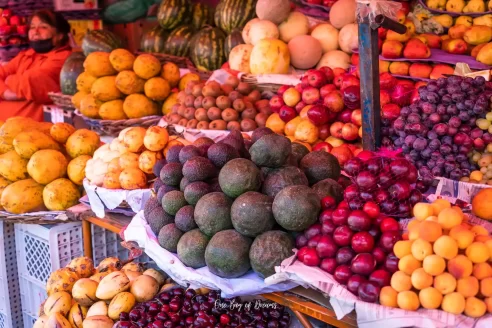
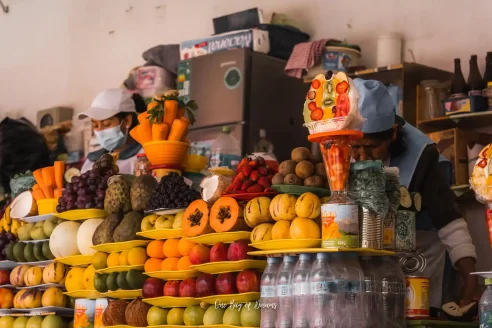

Top Tip: Try one of the delicous fresh juices in the market. Don’t be surprised if they fill up your glass a second time after you finished your juice. This is called “Yapa” and you don’t have to pay extra for this.
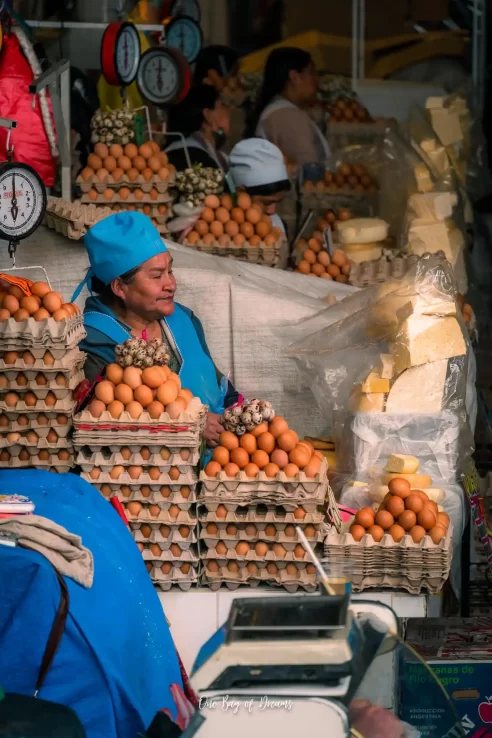
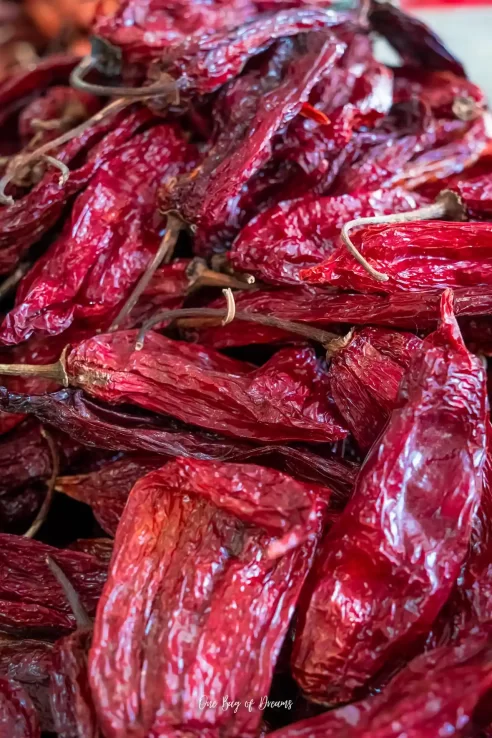
Go Hunting for Dinosaur Footprints at Parque Cretácico
The Parque Cretácico is a unique and fascinating attraction located just outside of Sucre. The park features life-sized replicas of some of the most famous dinosaurs, as well as a museum showcasing fossils and information about the prehistoric era.
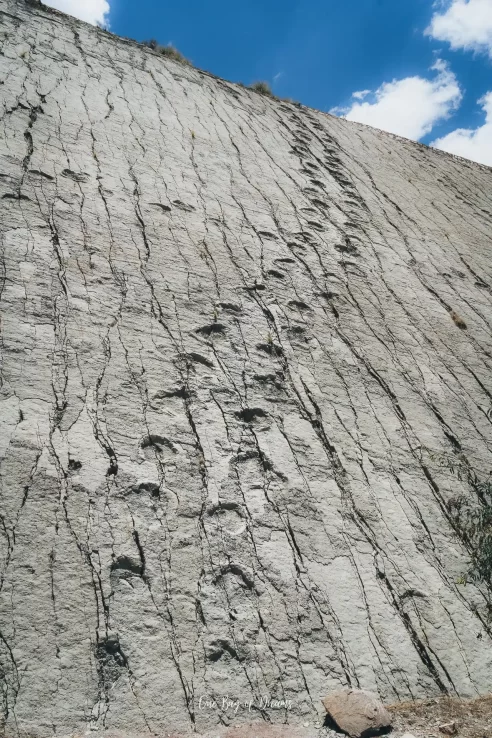
However, the park’s highlight is the impressive collection of over 5,000 dinosaur footprints, which are believed to be over 68 million years old. Visitors can take a guided tour of the park to learn more about the different species of dinosaurs and their habitats.
The park is open from 9 am until 5 pm on Tuesday to Sunday. The entrance fee to the Parque Cretácico is 30 Bolivianos for adults.
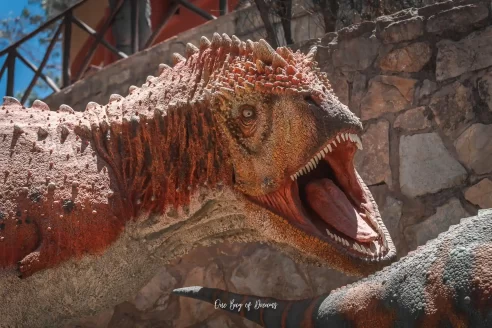
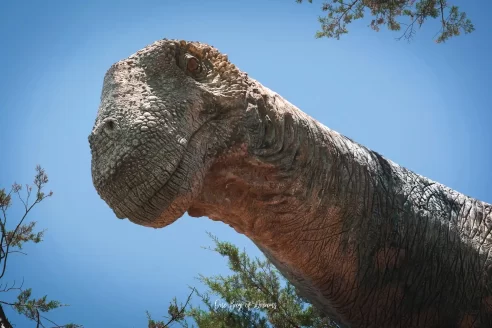

Top Tip: The easiest way to get to the Parque Cetácico is with the Dino-Bus. This red doubledecker bus leaves Tuesdays to Sundays at 11 am and at 3 pm with a cost for the return ticket of 15 Bolivianos.
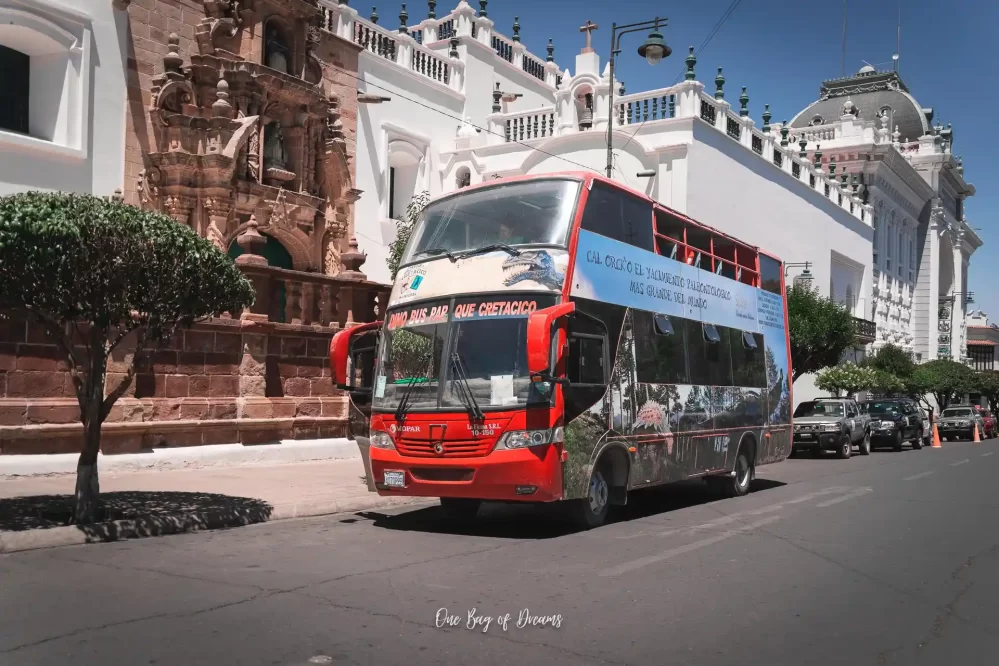
Enjoy the Views from Convento de San Felipe de Neri
The Convento San Felipe de Neri is a beautiful colonial-era convent located in the heart of Sucre. Built in the 17th century, the convent is famous for its stunning architecture and intricate wood carvings.
But perhaps the most impressive feature of the convent is the amazing view from the rooftop of the convent. If you climb the steep staircase to the top, you will be rewarded with panoramic views of the city, including the red-tiled rooftops, the blinding white towers, and the surrounding hills. It’s the perfect spot to snap some amazing photos or simply take in the breathtaking scenery of the White City of Sucre. Whether you are interested in history or simply looking for a great photo spot in Sucre, Convento San Felipe de Neri is definitely worth a visit.
The Convent is open from Monday to Friday from 3 p.m. until 6 p.m. as well as Saturdays from 9 a.m. until 6 p.m. The entrance fee is 17 Bolivianos and includes a short guided tour through the convent.
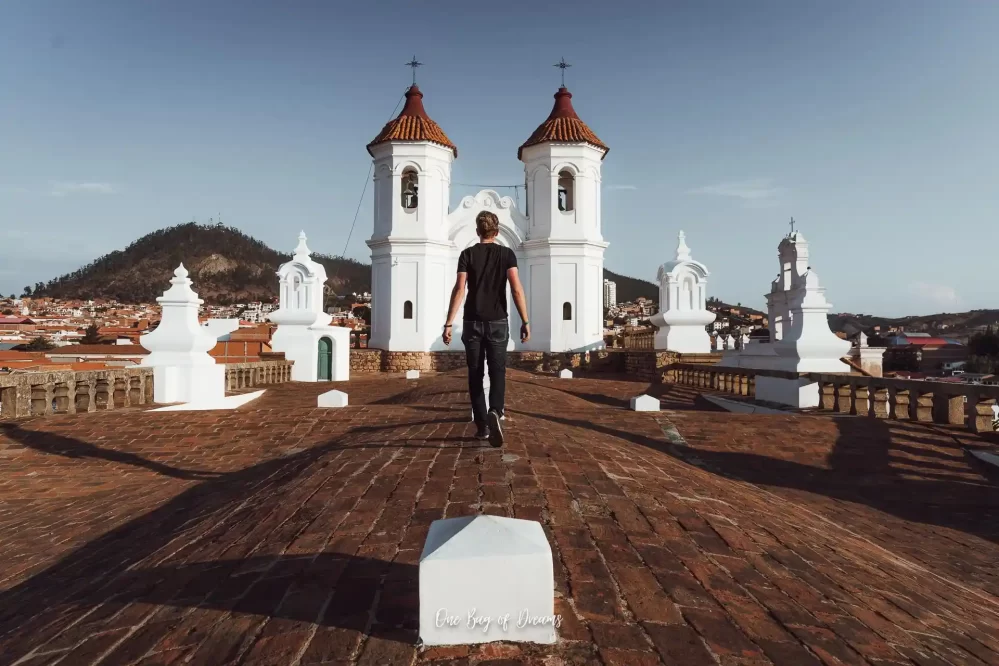

Top Tip: The best time to visit the convent is around sunset as the golden colour of the sun that covers all the sourrunding buildings is simply stunning.
Relax at the Cementerio General
The Cementerio General is a fascinating and somewhat relaxing attraction located in Sucre. This sprawling cemetery is the final resting place of many of the city’s most prominent citizens, and the ornate mausoleums and graves are a testament to the wealth and influence of these citizens.
But even if you’re not particularly interested in Sucre’s elite, the cemetery is still worth a visit for its peaceful atmosphere and stunning architecture. The mausoleums are adorned with intricate carvings and sculptures, and the graves are often covered in flowers and other offerings. You can soak up the peaceful atmosphere and just relax. If you’re looking for an offbeat attraction in Sucre, be sure to add Cementerio General to your itinerary.
Read More: If you are planning to visit La Paz in Bolivia, check out the guide of The Top Things to Do in La Paz, Bolivia!
Stroll Around Parque Simon Bolivar
Would you have thought that you can find the Eiffel Tower in Sucre? No? Well, let me prove you wrong. Right in the centre of the Parque Bolivar, you will find a copper-coloured tower which resembles the Eiffel Tower in Paris, well… at least a bit.
Even though it might not exactly look like a replica of the Eiffel Tower in Paris, it has more in common with its bigger brother in France than you think. This tower was actually planned by Gustave Eiffel who built the Eiffel Tower in Paris.
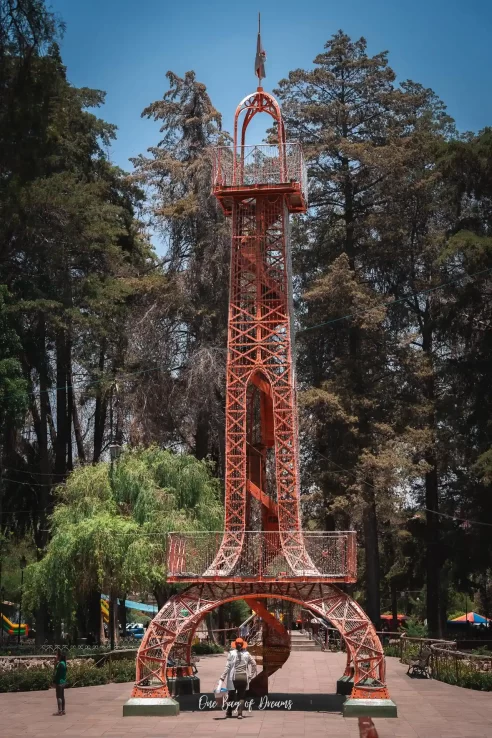
Furthermore, Parque Bolivar is a tranquil and charming park located in the heart of Sucre. It’s a popular spot for locals and tourists alike to relax and enjoy the lush greenery and peaceful atmosphere. The park features numerous walking paths, benches, fountains, and often ferries during the weekend.
Enjoy the Sunset at Mirador La Recoleta
The Recoleta is a historic complex located on a hill overlooking the White City of Sucre. The complex includes a church, a museum, and a colonial-era cloister. The Recoleta was originally founded in the 16th century by Franciscan monks, and it played an important role in the early history of Sucre. Today, visitors can explore the various buildings and learn about the fascinating history of the Recoleta and its inhabitants.
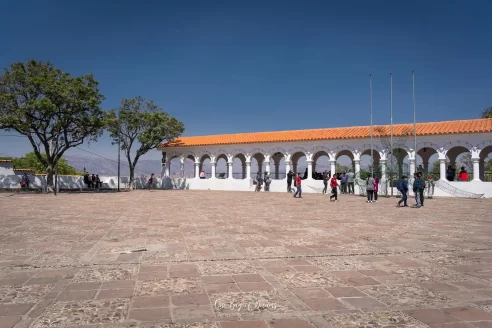
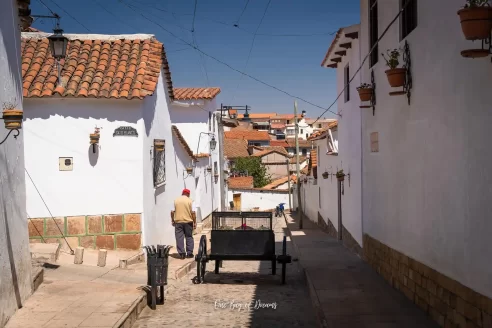
But perhaps the most memorable feature of the Recoleta is the Mirador with its breathtaking view from the hilltop. From here, visitors can take in panoramic views of Sucre and the surrounding mountains, making it a popular spot for photography and sightseeing. If you’re interested in history, architecture, or simply soaking up incredible views, a visit to the Recoleta is a must-do activity in Sucre.
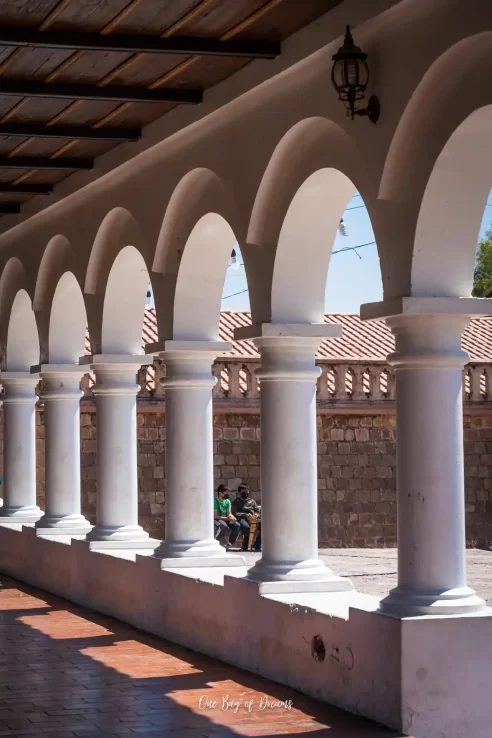
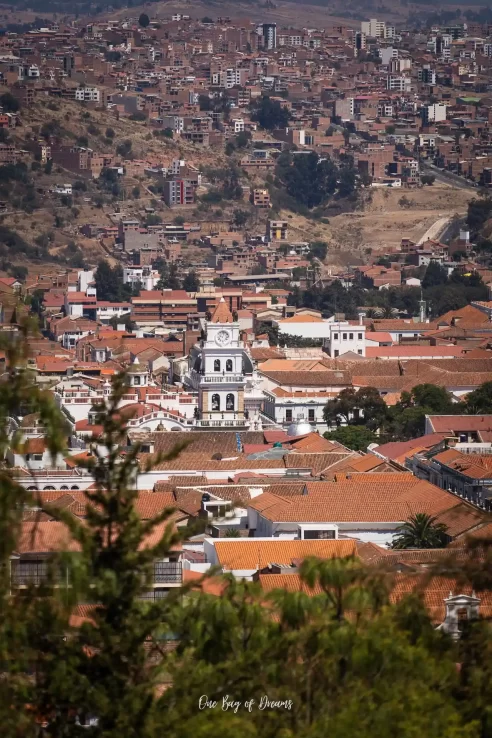
While you are up on the La Recoleta, don’t forget to check out the little picutesque sidestreets, such as Gato Blanco and Gato Negro.

Top Tip: The best time to visit the Mirador is around sunset. Take some drinks or a little pick-nick and enjoy the sunset. Alternatively, you can go to the Café Time & Coffee La Recoleta to enjoy the view.
Visit the Castillo de La Glorieta
The Castillo de La Glorieta is a beautiful castle located on the outskirts of Sucre. The castle was built in the 19th century by Francisco Argandoña Revilla, and it’s considered one of the most stunning examples of neoclassical architecture in Bolivia.
Francisco Argandoña Revilla was the only royal in Bolivian history and a philanthropist by heart! He founded several orphanages and charities.
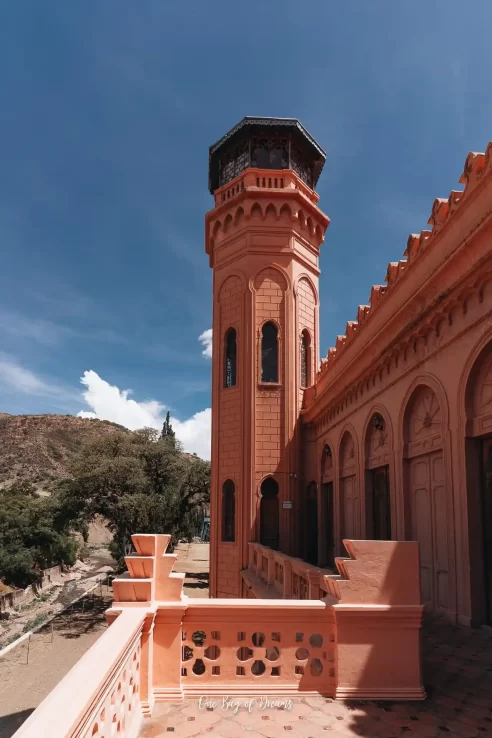
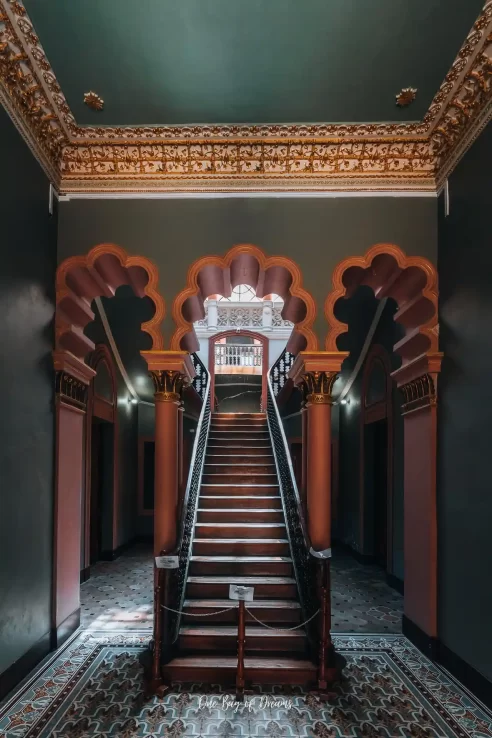
Visitors to Castillo de La Glorieta can explore the castle’s many rooms, which are filled with antique furniture, artwork, and other historical artefacts. The castle also boasts beautiful gardens and grounds, which are perfect for strolling or relaxing in. One of the most unique features of the Castillo de La Glorieta is its role in Bolivian history – in the 1930s, the castle was used as a military hospital. Today, visitors can learn about this fascinating history and experience one of Sucre’s most beloved landmarks.
The Castillo de La Glorieta is open from Tuesdays to Sundays from 9 a.m. until 4 p.m. and has an entrance fee of 20 Bolivianos, which includes a guided tour which I highly recommend.
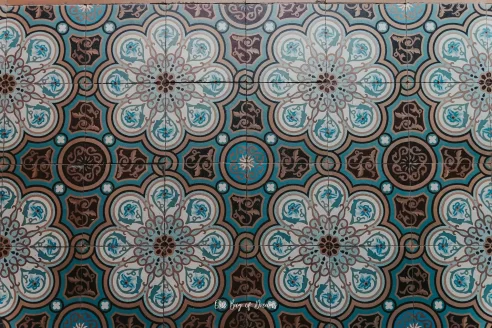
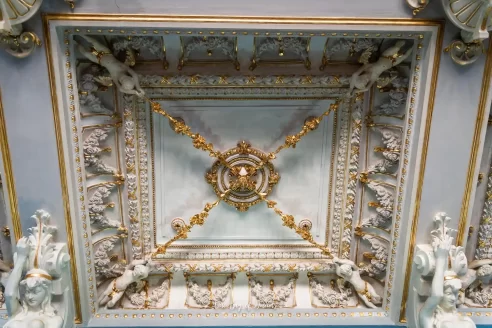

Top Tip: To get to the Castillo de la Glorieta take the bus number 4 from Sucre which departs from Mercado Central. The Castillo de la Glorieta is the last stop on the bus.
Take Some Spanish Lessons
Sucre is one of the best and also cheapest places in South America to learn Spanish, and there are many language schools located throughout the city. Whether you’re a beginner or an advanced student, you’ll find a school and a program that suits your needs. Learning Spanish in Sucre is a unique experience because you’ll have the opportunity to immerse yourself in the language and the culture.
Many schools offer homestays with local families, which is a great way to practice your Spanish and learn about Bolivian customs and traditions. You can also take advantage of the many cultural events that are held throughout the city. Plus, the cost of living in Sucre is quite low compared to other cities in South America, which makes it an affordable and attractive option for travellers who want to improve their language skills.
Some Hostels offer Spanish lessons as well, such as Dragonfly Guest House. This has the benefit that you can organize your lessons directly upon arrival in Sucre and you can take your lessons with less organizational effort.
Go Hiking in the Maragua Crater
If you’re a fan of outdoor adventure, you won’t want to miss the chance to explore the Maragua Crater, located just outside of Sucre. This incredible natural wonder is a geological formation that resembles a large crater, and it’s filled with amazing sights and experiences. The area is home to an incredible diversity of wildlife and plant life, as well as prehistoric fossils and dinosaur footprints. There are several hiking and trekking trails, such as the Camino del Inca, that wind through the crater, taking you through scenic valleys, mountains, and streams. You can also visit the nearby indigenous communities and learn about their culture and way of life. Whether you’re an experienced hiker and want to do a multiday hike or just looking for a day trip from Sucre, the Maragua Crater is an unforgettable destination that’s not to be missed.
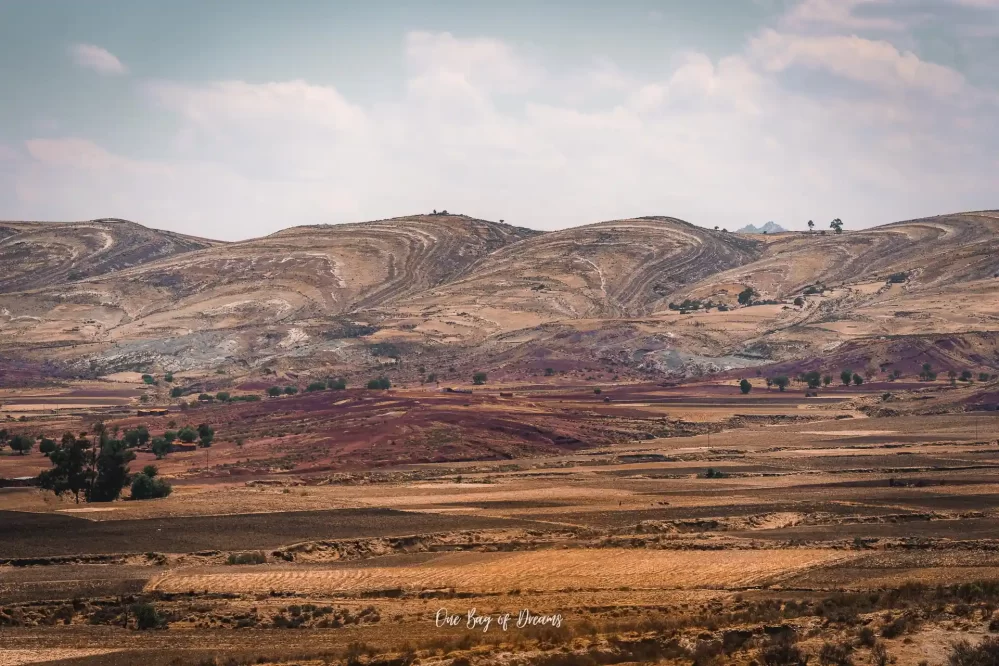
You can either visit the Maragua Cater with an organized tour from Sucre or take some friends and go on this hiking adventure without a tour guide. The hike itself starts with the Camino del Inca near Chataquila. To get there, you can either take the bus to Potolo that will drop you off close to the start of the Camino del Inca or organize a private transport from Sucre.
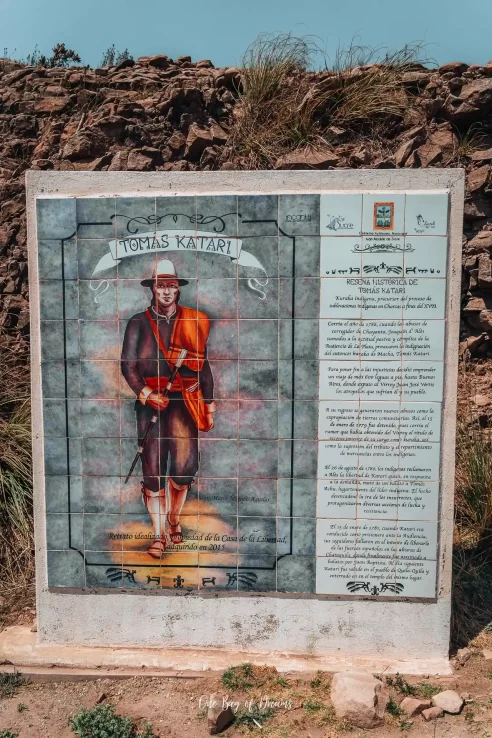
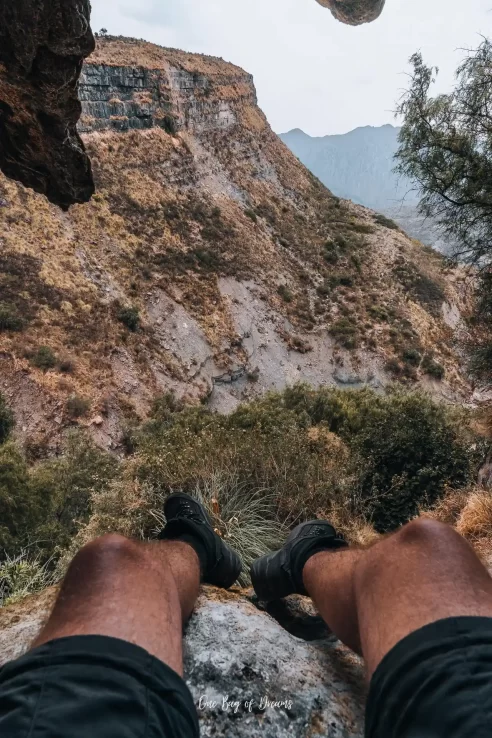
Read More: If you are planning to go to the Maragua Crater in Sucre, check out the upcoming guide of How to trek the Maragua Crater!
Visit the Casa de la Libertad
La Casa de la Libertad is a historic building located in the heart of Sucre that played a significant role in Bolivia’s independence. The building was the site where Bolivia’s Declaration of Independence was signed in 1825, and it now houses a museum that tells the story of Bolivia’s struggle for independence and the country’s rich cultural heritage. The museum features exhibits and artefacts related to Bolivian history and culture, including artwork, textiles, and historical documents. Visitors can take a guided tour of the building and learn about the events that led to Bolivia’s independence and the important role that Sucre played in the country’s history. If you are interested in learning more about Bolivia’s past, a visit to La Casa de la Libertad is a must-do activity in Sucre as it is one of the most important museums in Bolivia.
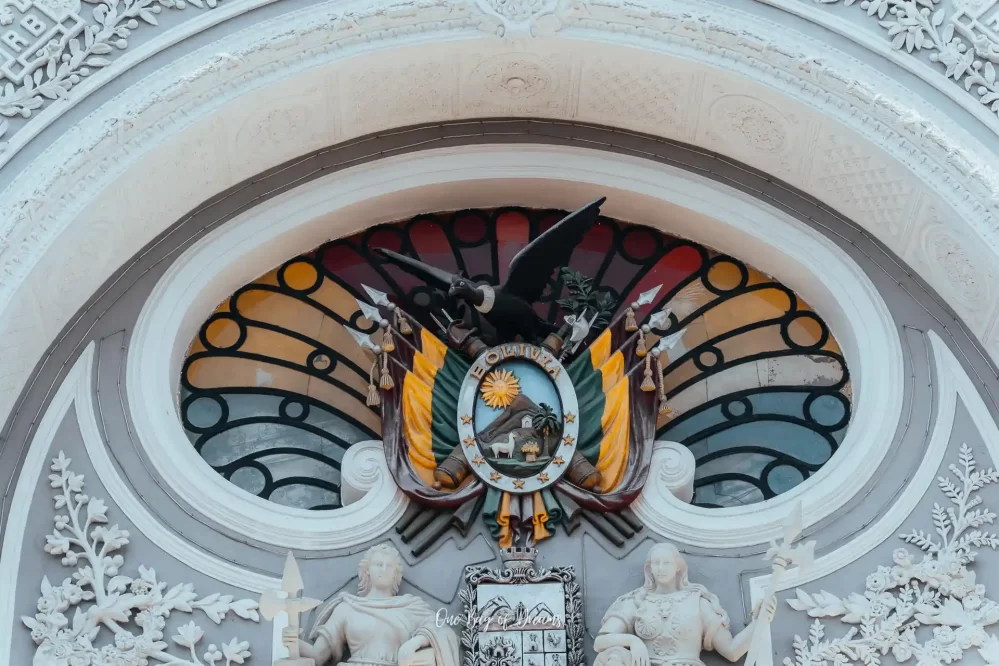
The Casa de la Libertad is open from Monday to Friday from 8:30 a.m. until 12:30 p.m. as well as from 2:30 p.m. until 6:30 p.m. During the weekend the Casa de la Libertad is open from 9 a.m. until 1 p.m. The entrance fee for the Casa de la Libertad is 15 Bolivianos.
Dive Into the Traditional Culture at Tarabuco Market
Located about 1,5 hours outside of Sucre, the Tarabuco Market is a colourful and bustling market that takes place every Sunday. The market is famous for its traditional textiles and handicrafts, which are made by local artisans using ancient techniques that have been passed down for generations. Visitors can browse the stalls and admire the intricate weavings and embroideries on display, or shop for souvenirs to take home. In addition to textiles, the market also offers a wide variety of fresh produce, meats, and other goods. The lively atmosphere, colourful displays, and friendly vendors make the Tarabuco Market a must-visit destination for anyone interested in Bolivian culture and tradition.

Top Tip: Every year on the 3rd Sunday of March the Festival of Pukllay is celebrated in Tarabuko. The Pukllay festival is celebrated to remember the 1816 Battle of Cumbate when the people of Tarabuco liberated their town from the Spanish.
Cool Down at the Siete Cascadas
Located about 15 kilometres from Sucre, you will find the Siete Cascadas, which is a beautiful series of waterfalls surrounded by rocky cliff walls that make for a refreshing day trip from the city. The waterfalls are surrounded by lush vegetation and the sound of the rushing water provides a peaceful escape from the hustle and bustle of city life. Visitors can take a dip in the pools at the base of the waterfalls or hike up to the upper cascades for a breathtaking view of the surrounding countryside. The area is also popular with birdwatchers, who come to spot the many species of birds that call this area home.

Top Tip: To get to the trail head of the Siete Cascadas take the bus with the letter Q from the Mercado Central and get of at the last stop of the bus.
Watch a Traditional Dance Show
Sucre is known for its vibrant and colourful traditional dance shows, which are a must-see for any visitor to the city. The most famous dance is the Diablada, a lively and energetic dance performed during the Carnival season. Other popular dances include the Chacarera, the Cueca, and the Tinku, each with its own unique style and choreography. Many dance shows are held at local cultural centres and theatres, and some restaurants also offer live dance performances during dinner. Watching a traditional dance show is not only a great way to experience the culture and traditions of Sucre, but it’s also an entertaining and memorable experience you won’t want to miss.
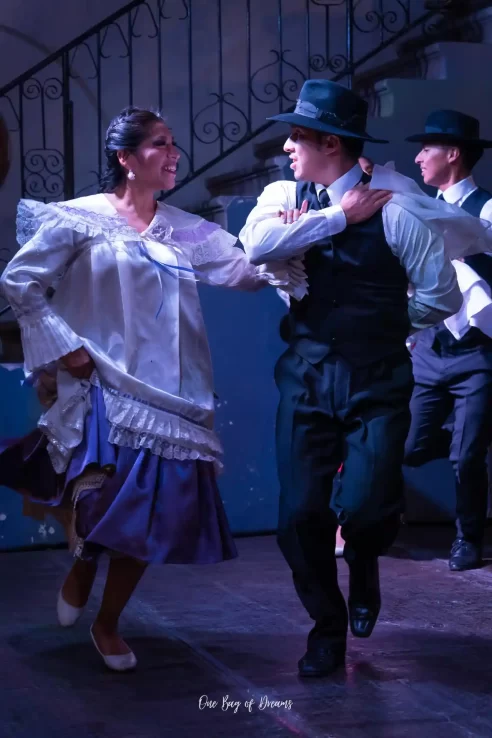
Take a Cooking Class
If you are looking to expand your culinary skills, taking a cooking class in Sucre is a must-do activity. The city is home to a variety of cooking schools and privately organized ones where you can learn how to prepare traditional Bolivian dishes such as empanadas, salteñas, and papas rellenas. You’ll have the chance to work with fresh, locally-sourced ingredients and learn techniques from experienced local chefs. Many classes include a visit to the local market to pick out ingredients and learn about the different spices and flavours used in Bolivian cuisine. Cooking classes in Sucre are a fun and interactive way to immerse yourself in the local culture and bring a taste of Bolivia back home with you.
Arriving in Sucre
To get to Sucre in Bolivia, there are two main options that you should consider. Both options, that I listed below are recommendable and totally depend on the route that you are taking through South America.
By Plane
When you arrive in Bolivia by plane, there is a high chance that you will land in La Paz at Aeropuerto Internacional de El Alto (LPB). From this airport, there are multiple flights every day directly from La Paz to Sucre.
By Bus
The Bus network in Bolivia is amazing. No matter if you want to come from La Paz or Uyuni to Sucre, there will be a bus connection with an overnight bus. Besides being better for the environment, it is also more affordable. For this reason, it is my preferred way to travel in Bolivia. A bus ticket from La Paz to Sucre will cost you around 130 Bolivianos.
Getting Around Sucre
The City of Sucre is super easy to get around as everything is super close together. To most of the places in Sucre, you can walk. However, if you don’t want to walk, there are always taxis available, which are safe to take. Expect to pay around 5 Bolivianos per person for a ride in a taxi. There is also an extensive bus network in Sucre that can get you almost everywhere in the city. A single ride on the bus costs 1,50 Bolivianos.
Sucre's Best Eats and Drinks
Exploring the culinary scene is an essential part of any travel experience, and Sucre is no exception. Sucre is home to a diverse range of delicious dishes and drinks, from traditional Andean cuisine to contemporary fusion dishes. Whether you’re looking for a hearty plate of meat and potatoes or a refreshing cocktail to cool off on a hot day, Sucre has something for everyone. Below you will find a list of the best restaurants that I tried in Sucre and that I can recommend to you. Get ready to tantalize your taste buds and discover the city’s vibrant food and drink scene.
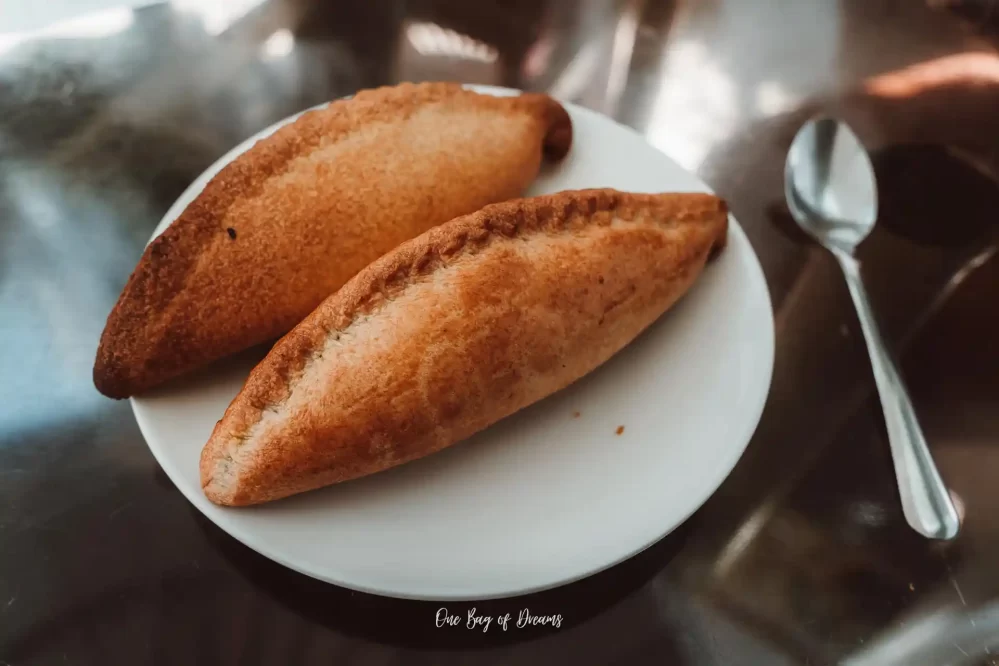
- Nativa – Enjoy an incredible Gourmet 6-Course Dinner for a very reasonable price.
- Joyride – Try the Pique a lo Macho or one of their delicious burgers.
- Metro Café – They serve delicious sushi as well as an amazing Poke Bowl.
- Llama Roja – Arguably the best Steakhouse in Sucre
- Café Florin – The Daily menu is super affordable and rich in flavour.
- Café Typica – A great breakfast menu in a beautiful garden area.
- Don Antonio – Delicious Mexican food. You will find Tacos, Chili con Carne and Quesedillas.
- Bienmesabe – Amazing Venezuelan Arepas and Cachapas.
- Mercado Central – The markets offer daily menus for only and a huge selection of juices.
- Salteñeria El Patio – One of the best Salteñas in Sucre.
- Heladeria Sucre – Incredible Ice-Cream with a huge variety of flavours. Also, try the Palmeritas.
Where to Stay in Sucre
Sucre has plenty of different accommodation options. Overall it is best to stay close to Plaza 25 de Mayo in Sucre. Personally, I stayed in two different hostels that I can highly recommend. You can find them listed below.
- Dragonfly Guest House – This hostel offers spacious dormitories with a light and a poweroutlet on each bed. It has an amazing garden with hammocks, a beautiful patio and a balcony on which you can enjoy your breakfast. It is super easy to socialize and it is one of the most popular hostel in Sucre. In the integrated Spanish School run you can start learning Spanish or improve your spanish skills.
- Villa Oropeza – This hostel is also well located in the city-center and offers a cute little garden. The dormitories are kind of small but cozy. They also offer some nice private rooms.
Best Season to Visit Sucre
You can visit Sucre in Bolivia all year round. However, the months from May to October are the best months to visit Sucre as the dry season offers the best weather with the lowest chance of rain. But keep in mind, that this is the peak tourist season in Sucre. If you want to experience the city with fewer tourists, the shoulder season from November to December and from March to April is offering pleasant weather as well with occasional rainfalls. If you’re planning to visit during the wet season, from December to February, be prepared for heavier rainfall. However. During this time you can witness the beautiful water mirror in the Saltflats of Uyuni.
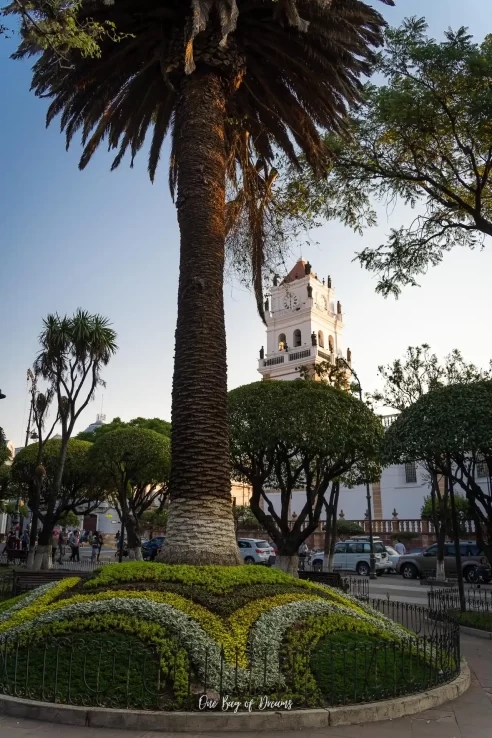
Read More: If you are planning to visit the Salt Flats in Uyuni, check out the upcoming Ultimate Guide of How to Visit the Stunning Salt Flats in Uyuni!
Your Budget for Sucre
In Sucre, Bolivia, I spent around 30 USD per person per day. This included my accommodation in a dorm room, entrance fees and tours, as well as food which I ate in restaurants most of the time.
If you want to eat out in a restaurant, expect to pay between 3 – 10 USD for a meal.
Pin This Sucre Travel Guide For Later!
